In 1992, Frederick B. Lea recorded his experiences of April 1945, when he witnessed the horrors of the Holocaust firsthand during the liberation of two concentration camps: Ohrdruf and Buchenwald. Lea was a Captain during the War. He served as company commander of the Headquarters Company, 46th AMB; as Battalion Supply Officer (S-4), and as Division Medical Supply Officer.
In the article Recollections of a Liberator , Captain Lea described his experiences visiting these camps. The article is part of the Frederick B. Lea collection of the United States Holocaust Memorial Museum, Washington D.C.
This is the final part of this series of three articles. I am taking Recollection of a Liberator as a guide in writing the stories of the liberation of Ohrduf (Recollections of a Liberator ), the liberation of Buchenwald (part 2), and in this final part the story of Buchenwald prisoner 21082, the resistance fighter from Luxembourg: Paul Sand.
I would like to offer a word of caution. The stories, photos, and films that I have included in these articles are shocking and may not be suitable for every reader.
Finding prisoner 21082
Here are the parts of this document that concern Paul Sand.
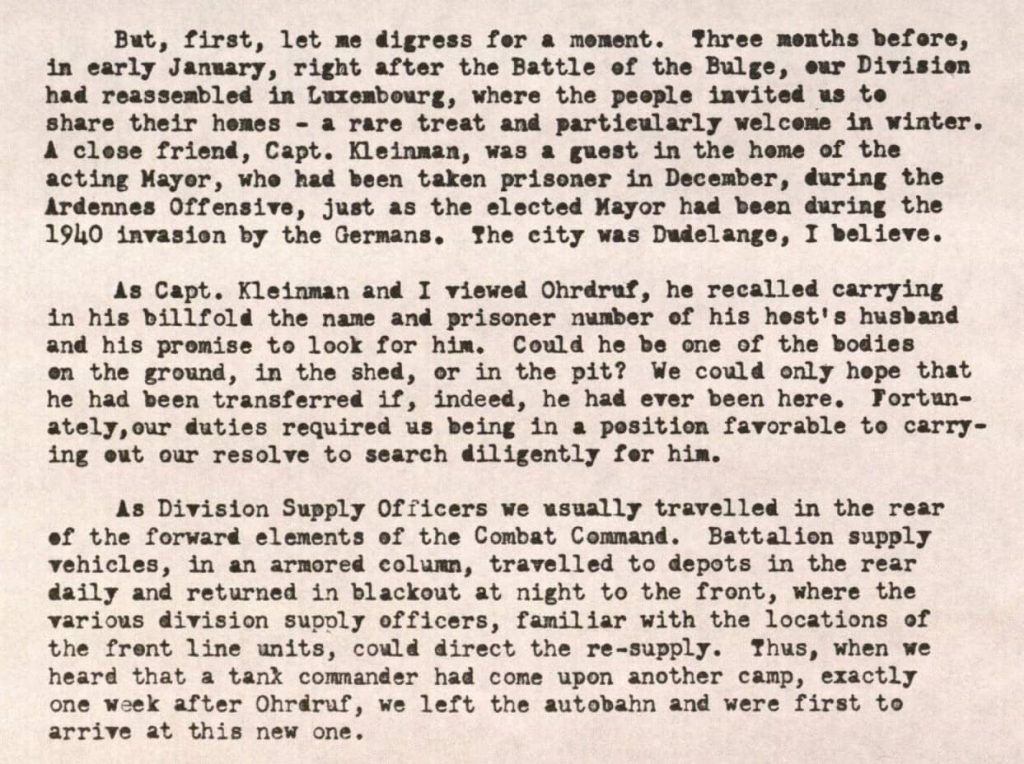
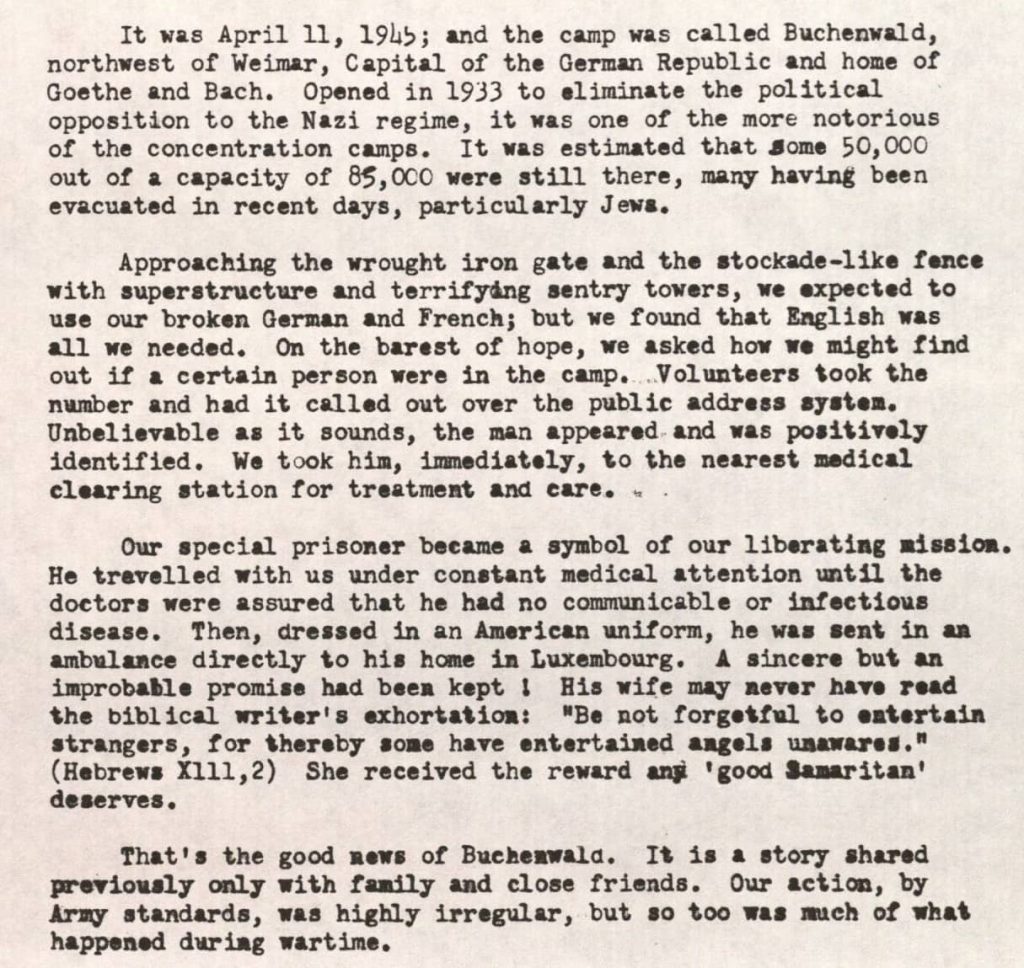
It is clear to me that finding this “special prisoner” was a profound experience to Frederick Lea as he describes it as “the good news of Buchenwald”.
To me, this story was astounding. What incredible coincidences brought these men together at that moment in the chaos of war. What is it that they say? Truth is stranger than fiction.
What I realized after reading the article was that Capt. Lea never mentioned the name of this prisoner. I don’t know if he ever even knew this name. I can imagine that in all the chaos and confusion of combat operations, finding this man in this camp must have been completely unexpected. Also, it was not Capt. Lea but Capt. Kleinman who had heard about this man while staying in Luxemburg.
For me, finding this “special prisoner” became a focal point in my research. I wanted to know who he was and what his story was.
Recollections of a Liberator gave me a few clues to start my research with:
Capt. Lea recalls that it was Capt Henry Kleinman who was first told of Paul Sand, during his stay in Luxemburg after the fighting in the Battle of the Bulge. After the 4th Armored Division broke the siege of Bastogne on 26th December 1944, the division was sent to the south of Luxemburg in January 1945. This move had two purposes: first, it gave the division a much-needed period of rest and recuperation. The second reason was for the Third Army to have a reserve in Luxemburg in case the German Army decided to attack there.
It was during this resting period that Capt. Kleinman was billeted in the home of a local family. Frederick Lea wrote that it was the home of an acting mayor. Lea himself stayed with the family next door, a local butcher and his wife.
Luckily I had the privilege to receive a copy of Capt. Lea’s unpublished memoirs. In these documents, he wrote a piece called: The Mayor of a city in Luxembourg (near Dudelange). It elaborates on the story and gives more clues on the identity I was looking for. Here are the relevant parts for this article:
“In early January 1945, while the Division was cleaning up following the Battle of the Bulge, some of us were in Luxembourg training replacements for the losses at Bastogne (the worst in American history). The people opened their hearts and homes to us. I stayed in the home of the local butcher and his wife, who shared their meals with Kleinman and me on occasion, – including a niece who taught English. He insisted on my company having their (the town’s) monthly meat ration, which was a 2” X 2” piece of steak per person. In return, we left them with enough sterile bandages and other medical supplies for months. They had none and had to wash and reuse rags for four years. All knew someone in a concentration camp.
Kleinman was next door at the home of the sister of the acting mayor. He was the owner of a steel mill, – there were several in this small city, – and had volunteered in 1940, when the first mayor was taken political prisoner by the Germans. In 1944, he too was taken and his sister pleaded with Kleinman to take his “number” on the chance that we might find him. It was such a long chance we were hesitant to give them that hope.
As it worked out, and due to our freedom of movement, we were together on the Autobahn one afternoon (April 11, 1945) near Weimar (objective of the division) when we heard a radio message from a tank commander saying he had discovered a large prisoner camp and asking for infantry to come and take over. He gave map coordinates and we were there in minutes, – the first ones.
He was standing in the turret of his tank while the other five tanks were herding the prisoners back toward the fence. They had cut wire fences and were attempting to chase the fleeing guards into the woods. We told him we might know someone in there; and he said, “he got trouble of my own”. I have to wait for the “Doughs”, my objective is Weimar.
At the gate, we found a prisoner in charge and gave him the number that Kleinman had those months. Soon, it was announced over the public address system, ordering the prisoner to come to the front gate. The person who appeared did not match the photo Kleinman carried but we checked the number on his arms. Not knowing what else to do, we took him, immediately to our nearest medical company clearing station at the Weimar airport (about 3 miles) and turned him over to the doctors.
The Mayor had gone from a man of 185 lbs down to 115. He said another five (5) pound loss would have made him unable to justify his ration and would have gone to the crematorium ovens. We kept him with us for a few days, until the doctors were assured he had no communicable disease and could stand the travel. Then, dressed in an American uniform, he was sent by ambulance to his home in Luxembourg. It was so irregular, and we were so thrilled to be closing in on our own release from uncertainty and fear, that we kept no record of his name, etc. The war was winding down; it was a road race to Czechoslovakia by way of Bavaria for us. Unfortunately, men were dying every day.” Frederick B. Lea
So the pieces of the puzzle I had were that the man I was looking for had probably lived in or near Dudelange, Luxemburg. He was described as an acting mayor, volunteering to take over for a Mayor who had been arrested earlier in the war, and that he was the owner of a steel mill.
Unfortunately, my search did not find anyone who fitted these descriptions. I could not find any acting mayors around Dudelange or steel mill owners who were arrested in 1944.
It wasn’t until 2016, when I visited the archive of Buchenwald, that I could start to put the pieces of the puzzle together with the incredible help of one of the staff members of the archive.
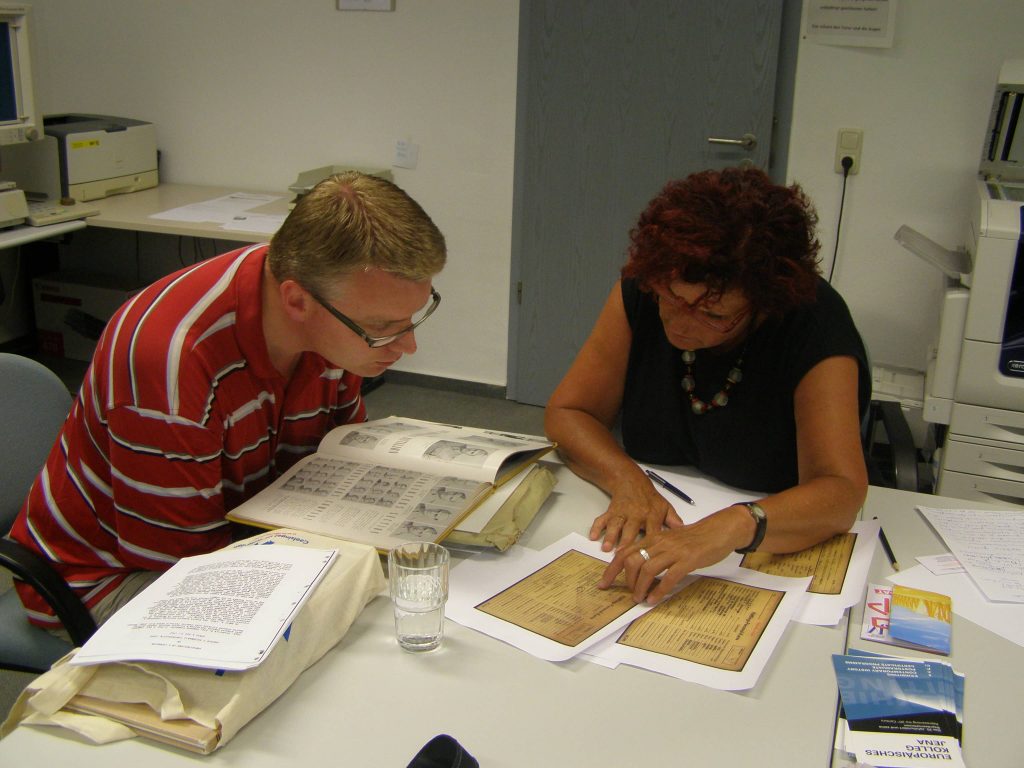
The clue that finally gave me the identity was the story of the liberation itself. The archive had a book published in Luxemburg that told the story of one of the prisoners of Buchenwald that was taken by an American who was a friend of his family. The name of the prisoner was Paul Sand!
The archive was able to send me his prisoner file from Buchenwald, which helped me further in my search. Here I would like to tell you this story.
Paul Sand
Paul Sand was born on the 12th October 1911 in Dudelange, Luxemburg.
It turns out he was not an acting mayor, nor an owner of a steel mill.
He lived most of his life in Fentange, Luxemburg in the owner’s home of a flour mill.
During the war, he became a member of one of Luxemburg’s resistance groups: Lëtzeburger Ro’de Lé’w (Luxembourgish Red Lion). It was founded in October 1941 in Hautcharage and was active during World War II especially in the south, west, and center of the country. We must remember that during the occupation of Luxemburg, the Germans planned to annex the country and saw it as part of the Reich. This annexation also meant that young men were drafted into the German army as German citizens.
The main activities of the LRL were to hide people from the German police and to bring them safely to France. The LRL also distributed patriotic flyers to encourage the Luxembourgish population to continue resistance against the Germans.
One of the LRL’s most famous hiding places was the Bunker Hondsbësch in Niederkorn. 122 Luxembourgian boys who refused to serve in the German Wehrmacht and other political refugees survived the war hidden there.
It is possible that Paul Sand took over a leading role in this group from someone who had been taken by the Germans earlier in the war, so one could say he was an “acting leader” of sorts. Perhaps the confusion in Lea’s description was based on the difference between mayor and major?
In March 1944, the LRL became one of the founders of the Union of Freedom organizations or Unio’n. This organization merged the different resistance groups into one.
During 1943 Paul Sand played a role in the preparations for this merger.
To bring the people in hiding to France, the LRL had to cooperate with some of the French resistance groups.
In January 1944, Paul Sand, together with Albert Ungeheuer (also with the Luxemburg resistance group called PI-Men for Patriotes Indépendants), traveled to St George-de-Mons in the Auvergne region of France. A meeting was planned there between some of the resistance groups of France and Luxemburg. Paul Sand describes in an article he wrote in 1977, that he was able to warn the people at this meeting that the Gestapo was aware of their resistance activities and so they should flee.
Albert Ungeheuer and the owner of the café (Jean Gros) where the meeting took place, were later arrested and brought to the Natzweiler-Struthof camp where they were both executed.
Paul Sand was arrested on 8th January 1944 in Longwy, France on his way back to Luxemburg. He was first taken to the prison in Rodange. On the 10th January 1944, he was brought to the prison in Luxemburg city, where he was interrogated.
On the 14th of February 1944, he was moved to Wittlich prison in Germany.
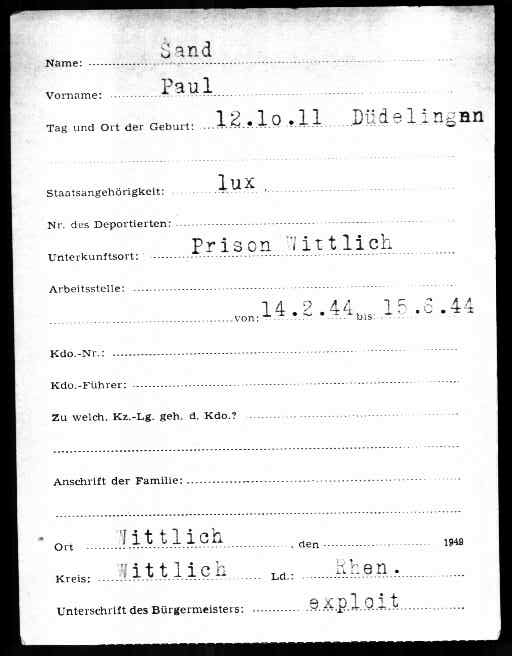
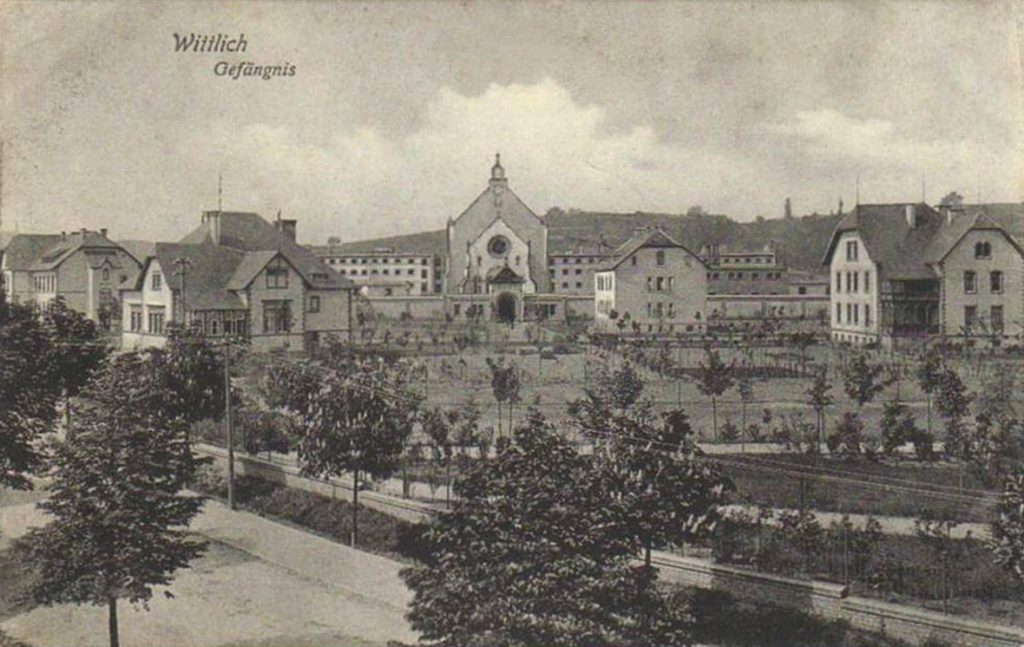
Here he was first shown his “Schützhaftbefehl”, the order to arrest him. It states that he was accused of being a member of the resistance and that he helped deserters flee.
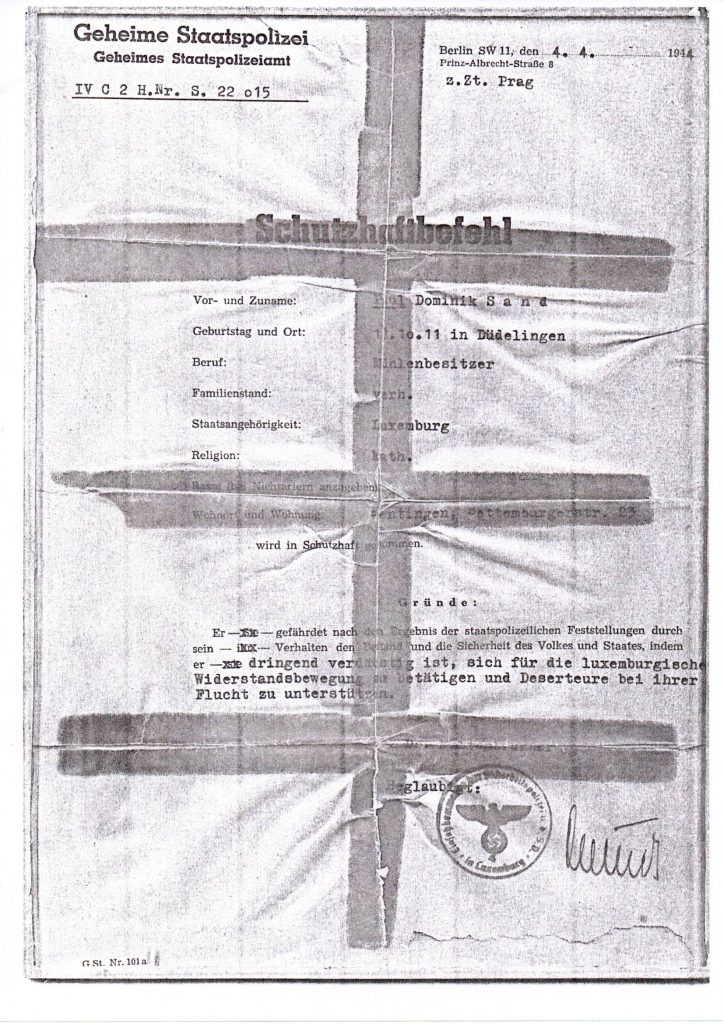
On June the 15th, Paul Sand was moved out of Wittlich prison, first to Koblenz, Germany, then to Frankfurt am Main, and finally to Buchenwald Concentration Camp, where he arrived on 26th June 1944.
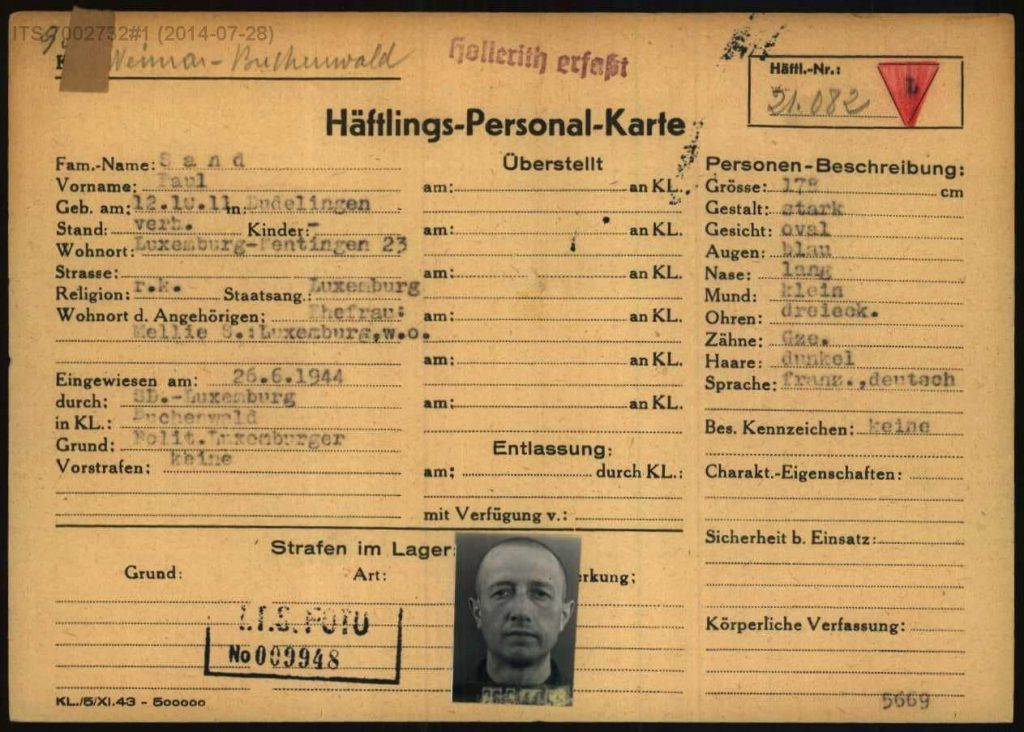
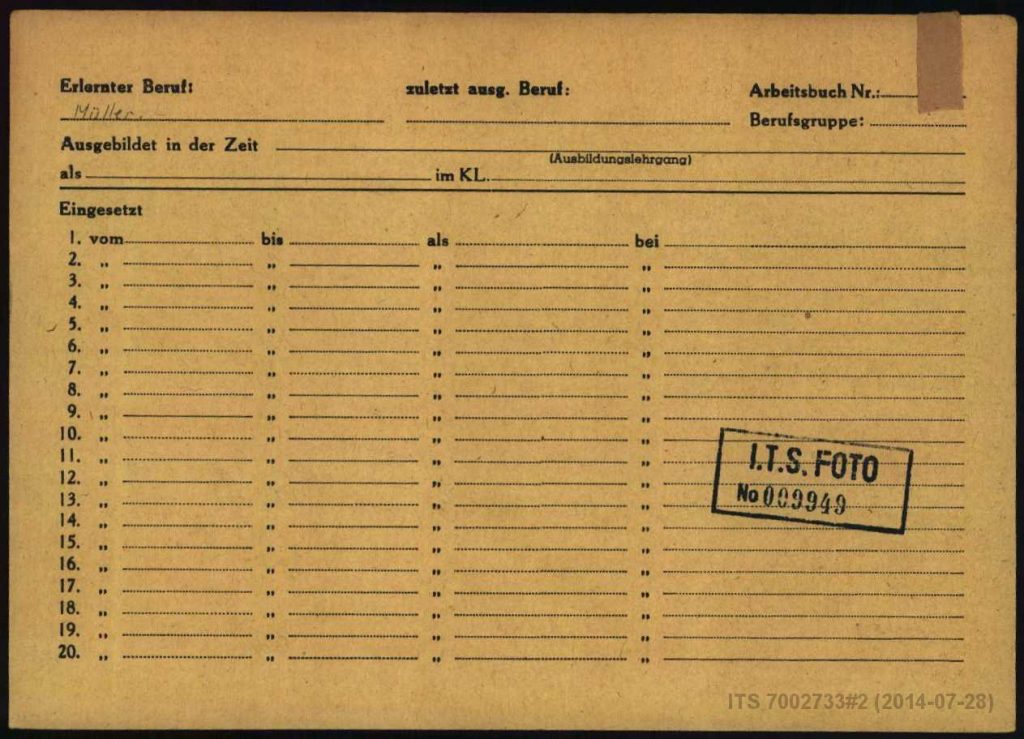
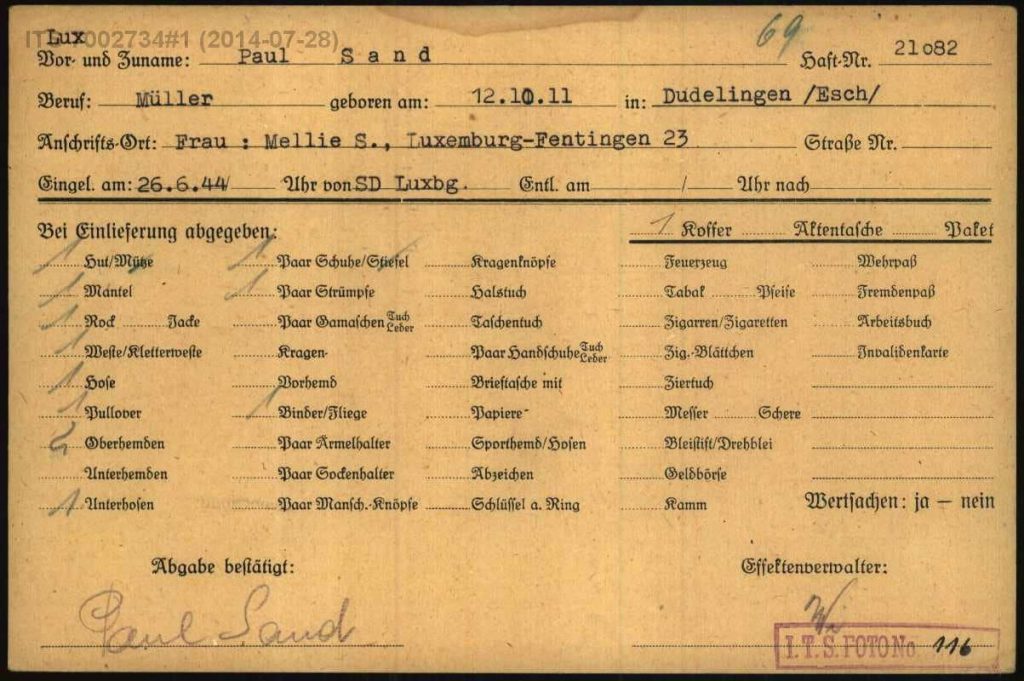
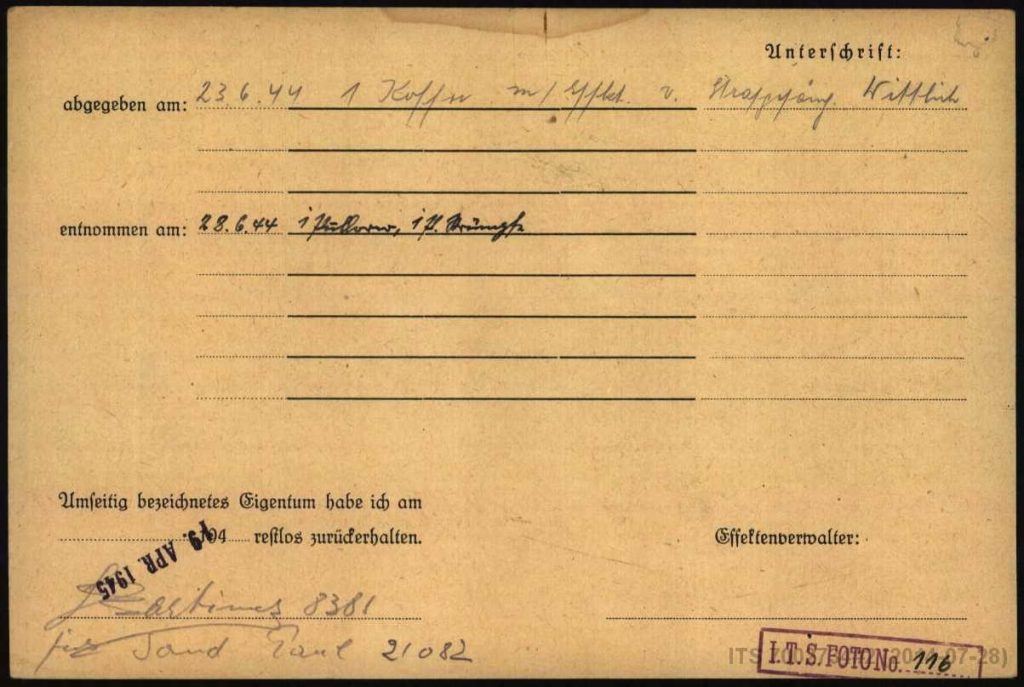
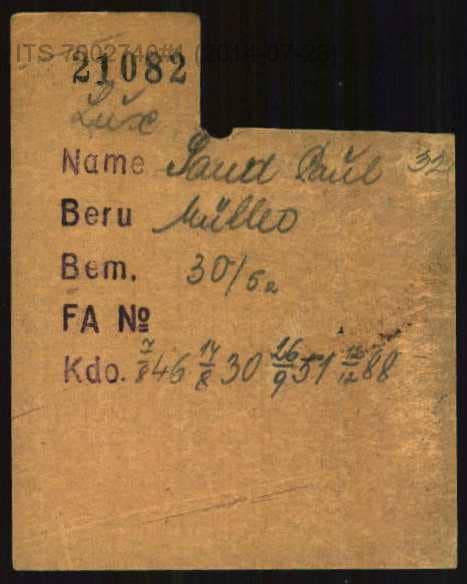
This file shows us a lot of information on his arrival and life in the camp. We can see that he was arrested by the SD (Sicherheids Dienst or security police) Luxemburg. We can see that he is classified as a political prisoner from Luxemburg, which is reflected in the red triangle with the letter “L” that he would he to wear on his clothes. Also, it shows his prisoner number: 21082. This number would also be worn on the clothes of the prisoners.
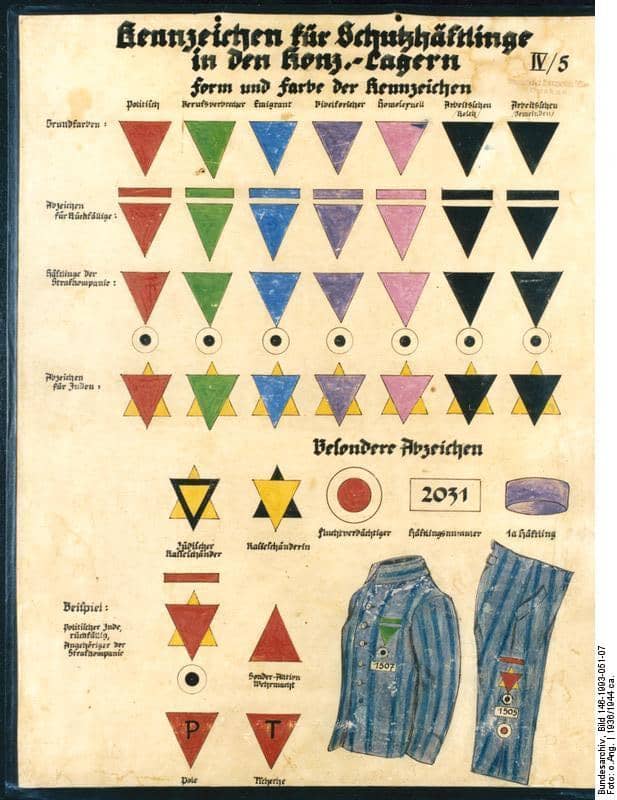
It shows us all the personal belongings he brought to the camp, that were placed in storage during his stay. Interestingly, after the liberation of Buchenwald, one of Paul Sand’s compatriots signs for the retrieval of Paul’s personal belongings. This signature by Leo Bartimes was dated on 19th April 1945, when Paul Sand had already been brought back to Luxemburg by the 4th Armored Division.
His file also shows us something about the life of Paul Sand in Buchenwald. Under the abbreviation “Kdo” in the last photo, it shows us to what Arbeitskommandos or working commandos Paul Sand was attached, at what time.
It shows us that he was first assigned to Kommando 46 on the 7th of August 1944. This Kommando meant working at the railway station of Buchenwald. Probably it meant helping with the unloading of new arrivals at the camp.
On 14th August 1994, Paul was transferred to Kommando 30 where he worked at the Gustloff Werke, the weapons factory near Weimar.
From 26th September 1994 till 15th December 1944, Paul Sand was assigned to Kommando 51, the prisoners that worked at the SS barracks.
Finally, on 15th December 1944, he was transferred back to the Gustloff Werke factory, on Kommando 88. This time at the Gustloff Werke II, a factory located next to Buchenwald. This factory is rumored to have produced parts of the V-2 rockets. The Allies bombed this factory on the 24th of August 1944. An aerial photo of this bombing is shown here. Is clearly shows the concentration camp next to it.
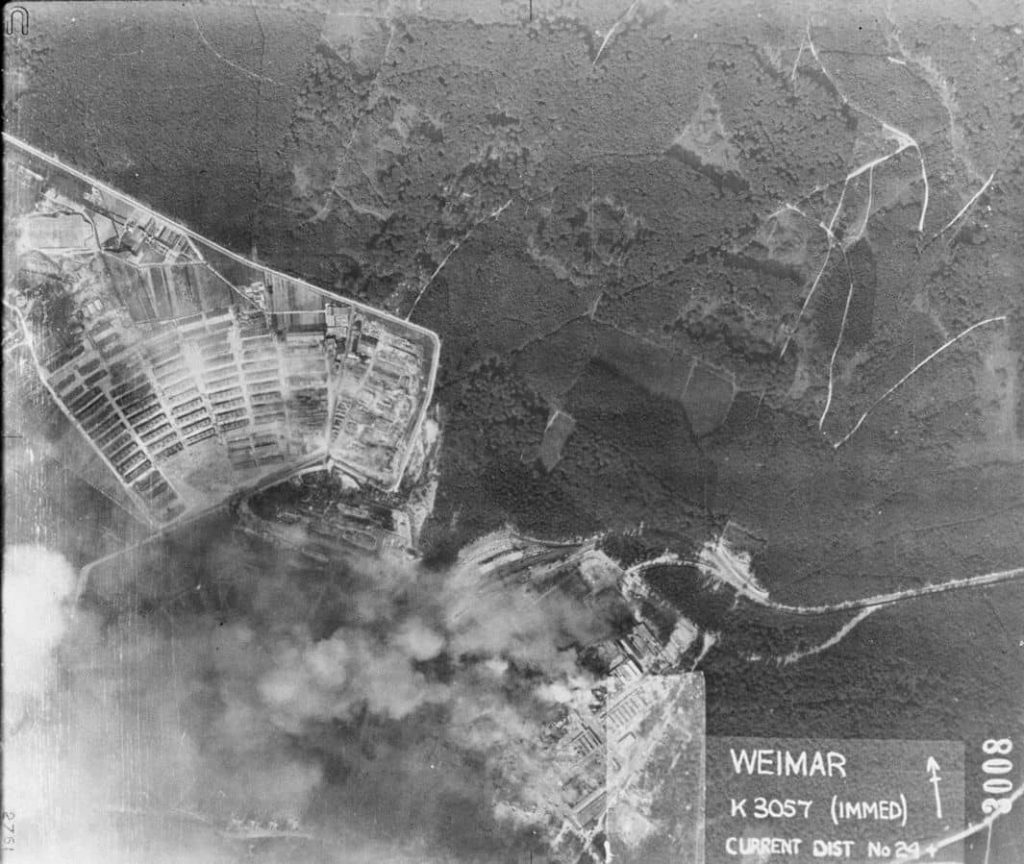
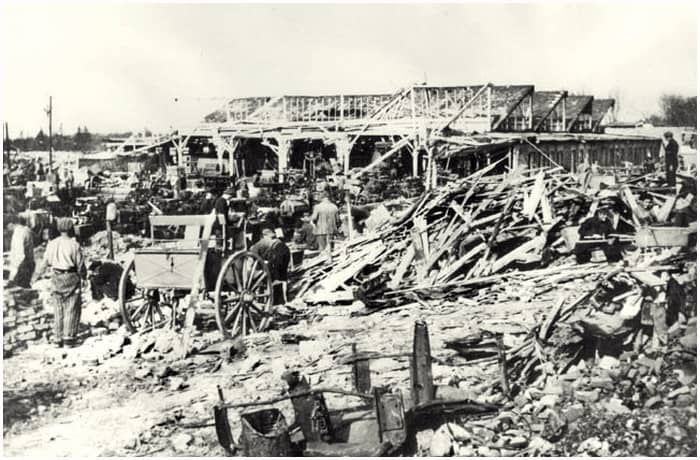
After the bombing of the factory, it never managed to produce anything in significant quantities. What his job was during this period is unclear. Perhaps the SS tried to repair the factory and perhaps Paul Sand was ordered to work on these repairs.
Liberation
As I have described in part 2 of this series, Buchenwald was liberated by units of the 4th Armored Division and 6th Armored Division on 11th April 1945.
When exactly Paul Sand was taken from Buchenwald by Capt. Lea and Capt. Kleinman remains unclear. Lea remembered that this was on the 11th April 1945, Paul Sand and other prisoners from Luxemburg remembered that this was on 13th April 1945.
Lea remembered taking Paul Sand to the nearest medical station, (probably) at the Weimar airfield at Nohra. Here Company C and Headquarters, 46th AMB set up their bivouac on 12th April 1945.
Remarkably, Paul Sand had a photo negative in his collection of a photo that was taken around his moment of liberation. I don’t know exactly when or where this photo was taken.
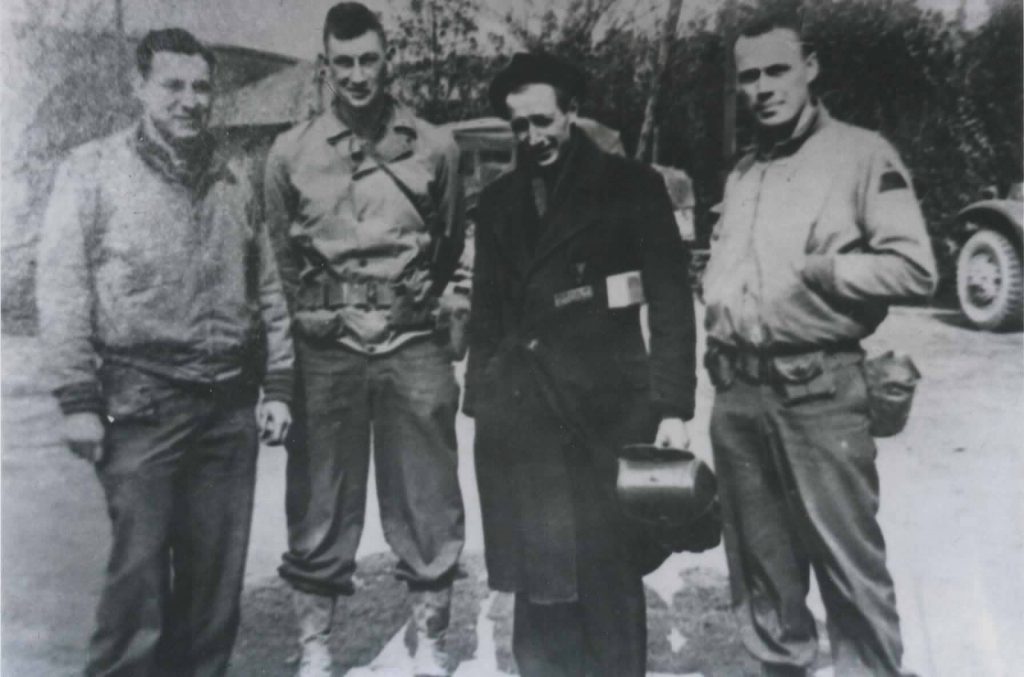
I believe the man on the left is Capt. Henry Kleinman. Standing next to him is Capt. Robert E. Beck (both officers in the 126th Arm. Ord. Main. Bn).
Then we see a frail-looking Paul Sand. The patches with his prisoner number and the red triangle are visible on the left side of his coat.
The man on the right is still not identified by me.
Capt. Lea wrote that Paul Sand was kept at the medical station for a few days until the doctors were convinced that he was well enough to travel. Paul Sand remembered that he was driven back to Luxemburg on the 14th of April 1945. He was brought there in an Army Jeep by Sgt. Bill King.
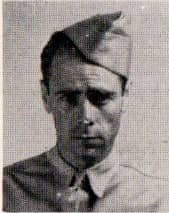
At his request, Sgt. King drove Paul Sand to his family in Differdange first. The next day, 15th April 1945 his friend in the resistance, Nicholas Kremer, brought him to his home in Fentange.
When we look at the timelines set by the memories of both Capt. Lea and Paul Sand, we see that they do not match. I tend to believe that the doctors of the 46th AMB would have kept Paul Sand for at least one day to make sure that he was well enough to travel and free from any communicable diseases that were rampant in the camp. If Paul Sand arrived in Differdange on the 14th April 1945, he must have left the medical station not later than early that morning, given that it is quite a long drive from the area around Weimar to Differdange, especially on the roads of 1945. This means that I think that Paul Sand was possibly not liberated on the 13th of April, but perhaps on the 12th of April. Unfortunately, there is no way to definitively determine the exact timeline of these events.
After his return to Fentange, Paul Sand made every possible effort to get his compatriots still in Buchenwald home. First, he published a list of all survivors in the national newspapers Escher Tageblatt and Luxemburger Wort on 19th and 20th April 1945.
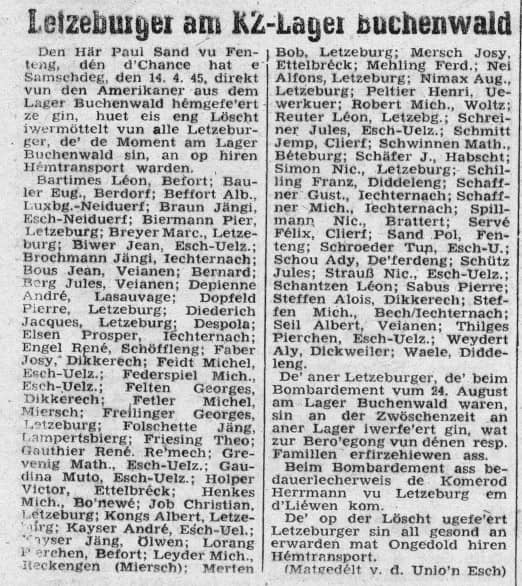
In his efforts to bring his fellow prisoners home, Paul was assisted by Nicholas Simon. This man was also imprisoned at Buchenwald (prisoner number 18). He was known to his friends by his nickname “Gandhi”. After the liberation of Buchenwald “Gandhi” decided not to wait until he was brought home. He left Buchenwald on his own and walked and hitchhiked home to Luxemburg.
What exactly happened in Luxemburg to bring the prisoners home is still unclear. It appears that there was a significant delay in getting the prisoners back, possibly due to bureaucratic inefficiency. Some have rumored that there was some deliberate effort not to bring the prisoners back too soon. Maybe this was done out of fear of any diseases they might bring back.
Whatever happened, Paul Sand and “Gandhi” were finally able to organize a convoy of two busses and one truck that left Luxemburg on the 26th April 1945, arriving at Buchenwald on the 28th April.
All the remaining 60 prisoners from Luxemburg left Buchenwald for the last time on 29th April 1945. They arrived home in Luxemburg the following day.
As Paul Sand wrote:
“Words were not enough to express our joy and relief, the nightmare was finally over.”
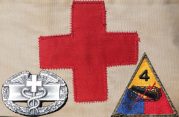
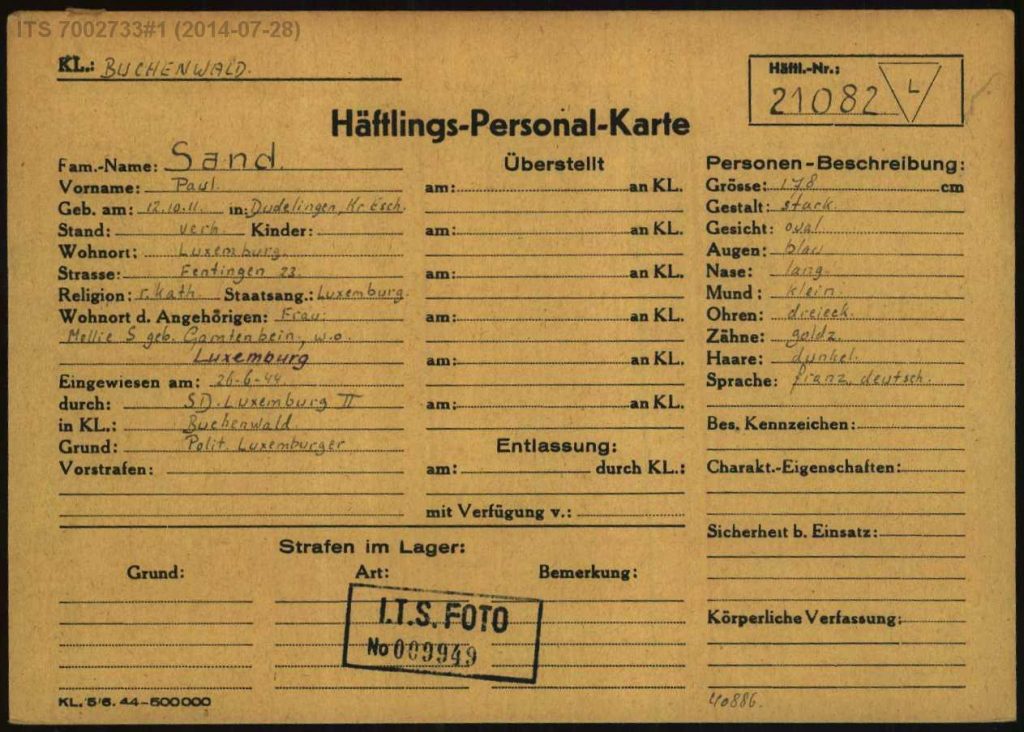
Pingback: Recollections of a Liberator: the liberation of Ohrdruf and Buchenwald. Part 1: Ohrdruf. - Patton's Best Medics
Pingback: Recollections of a Liberator: the liberation of Ohrdruf and Buchenwald. Part 2: Buchenwald. - Patton's Best Medics